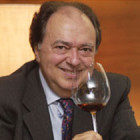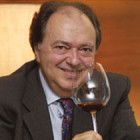It might be true that a great recipe, masterly made with excellent ingredients, requires no other sort of match than a glass of water in order to understand and appreciate it as much as it deserves (Gualtiero Marchesi dixit). Nonetheless, even if I may be described (again) as a gluttonous grossier, I would like to state that food without wine is like a marriage without love or, allow me to say, like love without sex. For the same reason, little or nothing does a barrage of technical tastings concern pleasure. I am referring to those wearing tours in which hundreds of tastings cauterize the tongue and palate of sommeliers: they are essential, useful to understand and learn more about wine, and I usually take part in some of these tastings, but I suffer. On the other hand, I always enjoy performing the new and challenging rite of finding the best pairing wine for the food I am eating (I have many reservations about other sorts of beverage, more or less traditional, but I am not going to linger on this). In a field which leaves out any dogma and general truth, the only certainty is the following: food is complete when it meets wine, and proper food brings out the essence of almost every wine. What does ‘proper food’ mean? It is easy to resort to long and predictable lists of ideal food-wine matching, codified in many books and treatises, which are useful for those who choose hastily and do not want to make huge mistakes. However, wine lovers build, refine, modify and perhaps turn over their own list, thanks to experience: you learn to drink well by drinking, as well as you learn to eat well by eating. Also, you learn to match food and wine by making your own tastings, not just trusting theories, graphs and charts, which may simply help arranging basic information before bringing it into question. The world of flavours, smells, aromas and tactile sensations is as boundless as the wine it represents: there is nothing more subjective, unpredictable and ephemeral than the perfect match. The more wines you taste and the more world recipes and ingredients you know, the more you realize how easy it is to be wrong and how the wiser approach is laic, open and disenchanted. Which does not mean that, as a very general statement, some academic rules are groundless (never pair red wines with eggs or asparagus, white wines match with fish, older red wines with cheese), but it is even banal to remind that it is meaningless to talk about fish in general, if one does not specify which sort of fish, the type of cooking, the dressing sauce, etc. For instance, I remember the most sharp and engaged among French cuisine’s great experts, Alain Senderens talking about pairing wines: “Take a fish, for example a sole, and cut it into half, cook briefly on a low flame in a pan without any dressing. On one half drizzle some olive oil and sprinkle some aromatic herbs. The best harmony will result from the match with a straight white from Côtes du Rhône (I made a counterproposal: a white wine from Collio). Then, season the other half of the sole with a champignon creamy sauce: now your nose will lead you to Puligny Montrachet, a full-bodied chardonnay…” However, we have to keep in mind that, as in any marriage, there are times in which one of the two parts is pushed to the background to highlight the role of the other part, that is, either wine contributes to bring out the intrinsic features of the recipe, or the recipe paves the way to the discovery of the wine’s hues and lingering taste. It is up to the gourmet taste to decide if one protagonist is more important than the other in a given match. And even before, it is the chef’s task to wonder and find an answer about the possible love match with the dish he is going to prepare, as Gino Veronelli said. Yet, to put it bluntly, not all chefs would arise the question: either because they think the only important element is the recipe, and the rest is an incidental variable, or because they are not culturally equipped to enter this very complex field. Needless to say that great chefs are not so, if they cannot reckon with wine, or even, as Alain Senderens said, if they cannot create their recipes with the wine in their mouth. In conclusion, I sum up Alain Senderens’s golden rules I heard him saying more than once, for the use of younger and open-minded chefs: food and wine pairings are never definitive; harmony is to be seek not only on the aromatic level, but also in tactile sensations, volume, consistency and density in the mouth; most pairings are complementary, that is similar elements join together… but there also are pairings by contrast; some wines reveal all their peculiarities only when paired with the chef’s matching recipe. So, we need more chefs who truly love wine, more recipes created with and for wine, and everyone drinking more good wines at home or at the restaurant.



